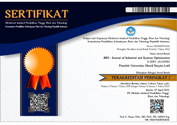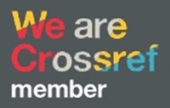PERENCANAAN PEMELIHARAAN MESIN PRODUKSI DENGAN MENGGUNAKAN METODE RELIABILITY CENTERED MAINTENANCE (RCM) (Studi Kasus: PT. S)
DOI:
https://doi.org/10.51804/jiso.v1i1.7-14Keywords:
FMEA, Mill 303, MTTF, MTTR, Optimal maintenance interval, RCM.Abstract
PT. S is a company that produces steel pipe. As a manufacturing company, the company relies heavily on its production machines, one of the main engines in this company is mill 303. However, the high frequency of failure and downtime caused the production decreased. This research use reliability centered maintenance (RCM) method. This method is used to determine the machine maintenance schedule as well and the interval optimal time. The stages of this research begin with determining the critical machine then make the system description followed by FMEA analysis, ABC analysis to determine critical component, FTA analysis, analysis of time distribution up to interval optimum maintenance. The result of this research is known 11 critical component with highest RPN value. 11 components that have been identified then analyzed the distribution of the time to failure and distribution of the time to repair and get the value of MTTR and MTTF. Bearing drive roll is the component with the highest RPN value of 512, the MTTR value of 3.56259, the MTTF value of 730,537 and the optimal maintenance interval of 504.64 hours.
References
Aziz, M. T., & Suprawhardana, M. S. (2010). Penerapan Metode Reliability Centered Maintenance (RCM) Berbasis Web Pada Sistem Pendingin Primer Di Reaktor Serba Guna GA. Siwabessy. JFN, 4(1).
Pranata, H. (2015). Reliability Centered Maintenance. Jakarta: Mitra Wacana media.
Sayuti, M., Muhammad, & Rifa'i, M. S. (2013). Evaluasi Manajemen Perawatan Mesin Dengan Menggunakan Metode Reliability Centered Maintenance Pada PT.Z. Malikussaleh Industrial Engineering Journal, 2(1), 9-13.
Taufik, & Septyani, S. (2015). Penentuan Interval Waktu Perawatan Komponen Kritis Pada Mesin Turbian DI Pt PLN (Perero) Sektor Pembangkit Ombilin. Jurnal Optimasi INdustri, 14(02), 238-258.
Downloads
Published
Issue
Section
License
With the receipt of the article by JISO Editorial Board and the decision to be published, the copyright regarding the article will be transferred to JISO. The copyright transfer form can be downloaded here.
JISO has the right to multiply and distribute the article and every author is not allowed to publish the same article that was published in this journal.
JISO is licensed under a Creative Commons Attribution-ShareAlike 4.0 International License.
Under the following terms:
Attribution — You must give appropriate credit, provide a link to the license, and indicate if changes were made. You may do so in any reasonable manner, but not in any way that suggests the licensor endorses you or your use.
ShareAlike — If you remix, transform, or build upon the material, you must distribute your contributions under the same license as the original.














